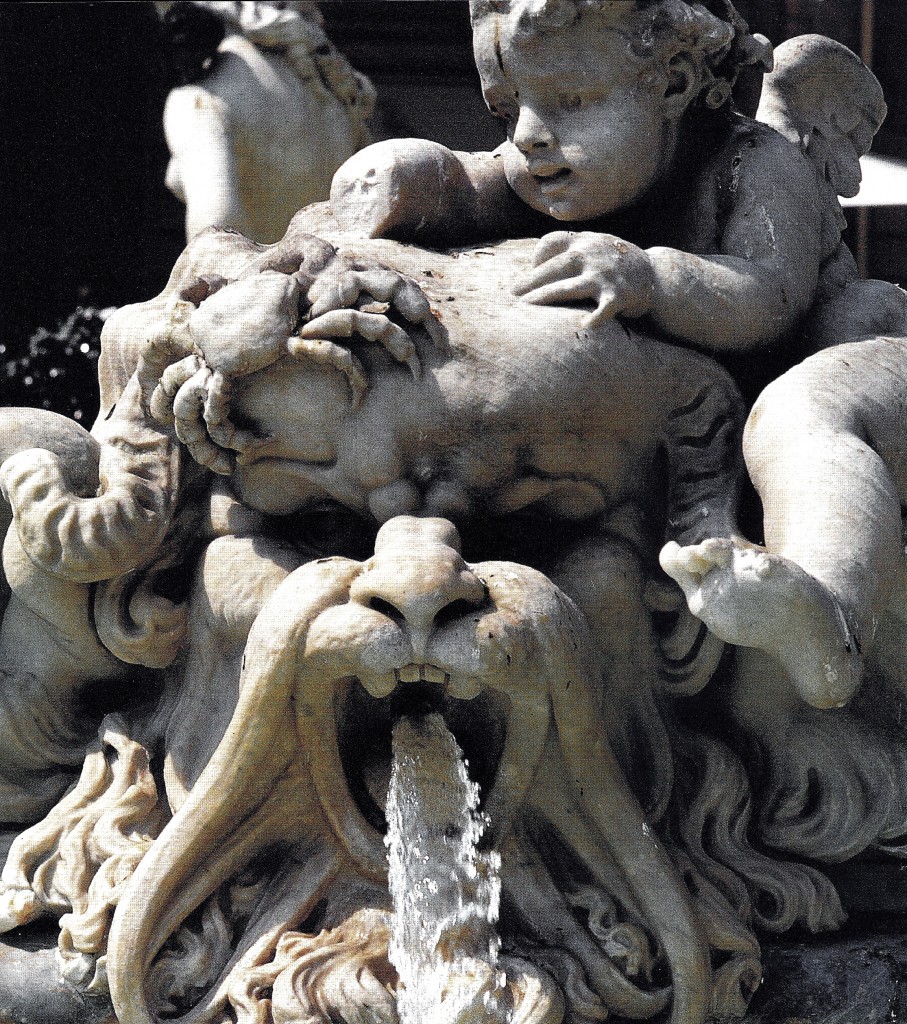
Cherub with crab at the Neptune Fountain, Piazza Navona, Rome. Photo by Paolo Destefanis, in Roma: Authentic Recipes from In and Around the Eternal City, by Julia della Croce (Chronicle Books)
Every cookbook writer loves to hear from their readers and find out how they’re getting along with the recipes that are lovingly tested to make them foolproof before they’re published (but, hey! don’t expect the results promised if you go off and “do your own thing”). Here’s a message I got recently (what a treat—they even sent a photo!):
Before my wife had given me your Classic Italian Cookbook, I had only nostalgia for the dishes I had tasted during my stay in Rome. Now I am able to re-create those same dishes in my own home, and I can’t thank you enough for introducing ACTUAL Italian food into my family. Somehow, however (and maybe you know where I’m coming from), even the best ingredients in North Carolina (whre I live), including those from my own garden, don’t come close to what I remember tasting in Italy. Is there some reason for this? Is it just my romantic memory of that wonderful food, or is there something qualitatively different about the ingredients? Is it all in the preparation? Or is it really the soil and the soul of Italy that makes the difference?
— David Winstead
Dear David,
I think the outsider who experiences the astonishing flavor and vivid colors of Italy’s food for the first time can appreciate it even more than the Italians themselves. The intense Mediterranean sun, long growing seasons, and mineral-rich volcanic soils make for fruit, vegetables, grains and legumes with remarkable flavor. Farmers still stick close to nature in raising their crops and feeding their livestock, and food is eaten in its season and when it’s in its prime (and not produced for size and shelf life). Besides the goodness of the raw ingredients, Italian cooks are very skillful at making food taste of itself—sauces, reductions, garnish, and elaborate cooking techniques that take you further and further away from its primal flavors are foreign to Italian cuisine. You could say that in Italy, there’s a cult of food. It borders on worship, harking back to pagan times. Food was—and still is—celebrated with poetry, music, dancing, theater, and public spectacles (sagre). Where else but in Italy would the citizens elect a new pasta “Pope” once a year to lead a procession of thousands through the streets on a donkey, bearing a scepter impaled with gnocchi—all to wind up in the town square for a mass feast of the city’s iconic dish—gnocchi with meat sauce (see my post, Gnocchi Friday in Verona)?
–JdC



 Follow
Follow
 email
email
Spot on, Julia! The “cult of food” in Italy is, I think, an expression of the Italian heart, something to be missed by anyone who has visited the country. More food festivals in small towns should be encouraged in the U.S. as well.